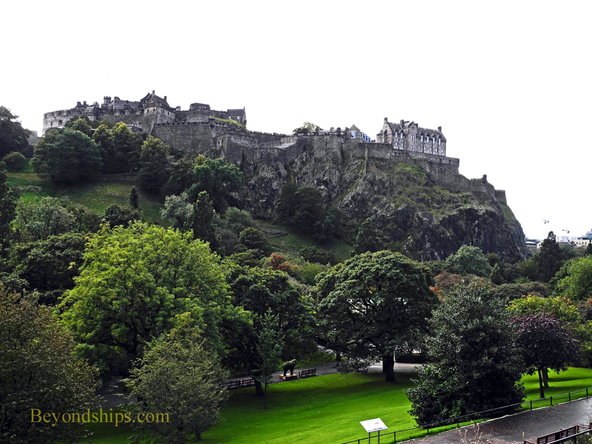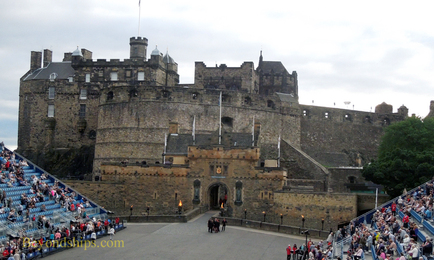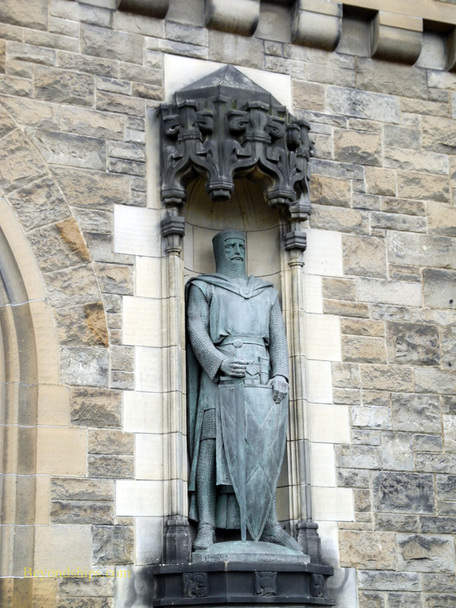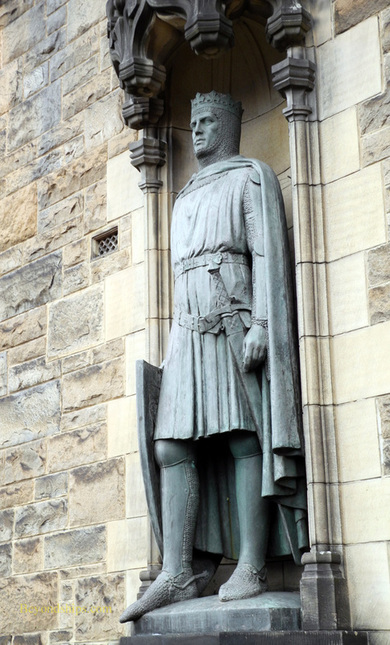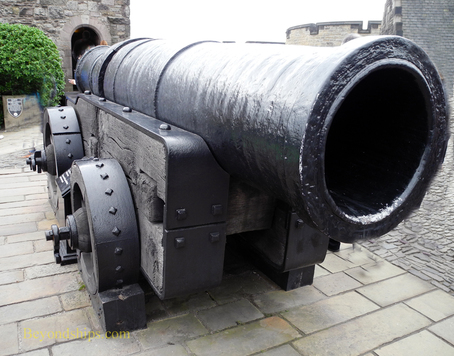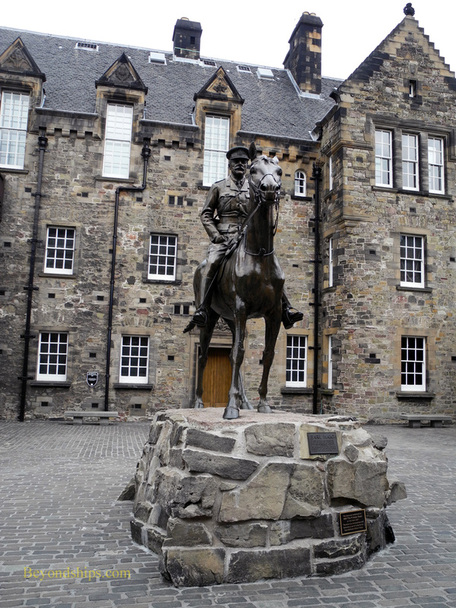Introduction and History of the Castle.........................................Page One
The Lower Castle........................................................................Page Two
The Upper Castle.........................................................................Page Three
The Lower Castle........................................................................Page Two
The Upper Castle.........................................................................Page Three
|
Above: The eastern side of the Castle opens out onto the Esplanade where the Edinburgh Royal Military Tattoo is performed each year.
Today, the Castle is one of Scotland's leading tourist attractions, playing host to more than a million visitors each year. Not only is it the site of historic events but it is home to Scotland's Crown Jewels, the Scottish National War Memorial and several museums.
|
|
Statues of Scotland's great heroes William Wallace (above) and Robert The Bruce (below) flank the main entrance to the Castle. Above: On display at the Castle is Mons Meg, a siege cannon, that was presented to King James II of Scotland in 1457 and was used for military purposes for over 100 years. It then became a ceremonial gun, firing salutes for events such as the wedding of Mary Queen of Scots. It could fire a 330 pound projectile two miles. Below: Inside the Castle in the courtyard before the National War Museum is a statue of Earl Haig who commanded the British Armies in France during World War I. |
The Castle's StoryEdinburgh Castle was not built all at one time. Rather, sections were built, torn down and replaced with other structures over the centuries. As a result, the Castle we see today is largely a mixture of medieval, Georgian and Victorian structures.
The Castle's origins are shrouded in the mists of time. There is evidence that the rock on which it is built ("Castle Rock") was occupied perhaps as early as the Bronze Age. Roman writings also refer to a settlement on Castle Rock. However, not much is known about these settlements. By the end of the 9th century, there was a castle on the Rock. Queen Margaret (later St. Margaret) is believed to have received the news of the slaying of King Malcolm III at the Castle. She died of grief a few days later. Her son, King David I, made Edinburgh his administrative center and may have held an early version of a parliament in the Castle. St. Margaret's Chapel, the oldest building in Edinburgh, is all that remains of his castle. By the end of the 12th century, the Castle was the main repository for administrative papers in Scotland and also a frequent royal residence. Between 1286 and 1359, Scotland fought a series of wars with England called the Wars for Independence. In 1296, the English successfully besieged the Castle. However, in 1314, a party of 30 men led by the Earl of Moray scaled the north face of Castle Rock, climbed the wall and retook the Castle. King Robert The Bruce ordered the Castle's defenses destroyed so that the Castle would not be of use to the English again. However, in 1335, the English returned and refortified the Castle. They held it until 1341 when the Lord of Liddesdale and a group of men gained entry by disguising themselves as merchants bringing supplies to the Castle. During the next two centuries, the Castle's defenses were strengthen and more building took place. In the 15th century, the Castle saw increased use as an arsenal and armory with cannons being manufactured there. At the same time, it saw less use as a royal residence. Monarchs came to prefer Holyrood House, which is about a mile away. By the middle of the 16th century, monarchs were only staying at the Castle in times of crisis or when their duties required them to be there. One such crisis, took place during the reign of Mary Queen of Scots. She left Holyrood House and had her baby at the Castle in 1566. He subsequently became not only James VI of Scotland but also James I of England. After the murder of Mary's first husband and her unpopular marriage to the Earl of Bothwell, civil war broke out and Mary was forced to abdicate in favor of her infant son and flee the country. Edinburgh Castle, however, remained in the hands of her supporters. Its suffered a siege, which lasted two years and so is called the Lang Siege. After artillery fire destroyed much of the Castle's defenses. it was surrendered. As a result, much of today' Castle dates from after the Lang Siege. King Charles I was the last monarch to reside at the Castle. He spent one night there in 1633 before his coronation as King of Scotland. Charles I was executed and the monarchy abolished at the end of the English Civil War in 1649. However, after Scotland declared Charles' son King Charles II, an English army under Oliver Cromwell invaded and took the Castle in 1650. They used the Castle as a garrisoned fortress, a role that the Castle continued to play until 1923. The Castle was also used as a prisoner of war camp during the Seven Years War, the American Revolution, the Napoleonic Wars. After 49 prisoners escaped en masse in 1811, it was decided to phase out this role. By the beginning of the 20th century, the Castle's military use was declining and responsibility for it was transferred from the War Office to the Office of Works in 1905. During World War I, however, artillery at the Castle did succeed in driving off a German Zeppelin that was bombing the city. Coincident with the decline in its military role, the Castle came to be seen as a national monument and tourist attraction. |
|
|
|
Cruise destination - Scotland - Edinburgh Castle - page 1
